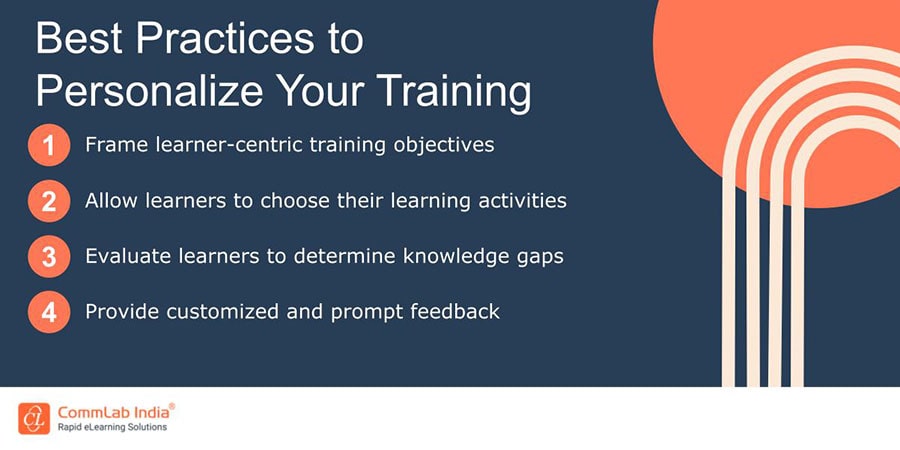How to Mitigate Compliance Training Challenges with Blended Learning
Explore how blended learning can effectively address several compliance training challenges and a few best practices to leverage it.

Compliance training is essential for organizations to ensure adherence to regulations and ethical standards. However, it often faces challenges such as low engagement, accessibility issues, and high costs. Blended learning offers a solution by combining traditional face-to-face instruction with online learning activities. This article explores six key compliance training challenges and how blended learning mitigates them to create more effective training programs.
Trying to Mitigate Various Compliance Training Challenges? Try Blended Learning!
Here are a few challenges it can deal with -
- Engagement
- Accessibility
- Customization
- Cost-effectiveness
- Consistency
- Retention and Application
6 Key Compliance Training Challenges that can be Mitigated with Blended Learning
1. Engagement
Challenge : Compliance training often struggles with low learner engagement due to its mandatory nature and perceived dry content.
Mitigation with Blended Learning : Blended learning can incorporate various interactive elements such as quizzes, simulations, case studies, and gamified activities to make the training more engaging. For example, online modules can include interactive quizzes with immediate feedback, simulations that allow learners to practice real-world scenarios, and gamified elements like leaderboards and badges to incentivize participation and progression.

2. Accessibility
Challenge : Traditional face-to-face compliance training can be challenging to schedule for all employees, especially those working different shifts or in remote locations.
Mitigation with Blended Learning: Blended learning provides flexibility and accessibility by allowing learners to access training materials online at their convenience. Online modules, video-based learning programs, and extra resources can be accessed anytime, anywhere, eliminating the constraints of scheduling conflicts and geographical barriers.
→ Download Checklist Now: Is Blended Learning Right For You?
3. Customization
Challenge: Compliance training needs may vary across different organizational roles or departments, requiring customized content and delivery methods.
Mitigation with Blended Learning: Blended learning enables customization by offering a mix of online modules, live sessions, and in-person workshops tailored to specific job functions or compliance requirements. Organizations can develop modular content that can be personalized based on learners' roles, responsibilities, and knowledge levels. Here are a few best practices for personalizing training.

4. Cost-Effectiveness
Challenge: Hosting in-person compliance training sessions can incur significant costs related to venue rental, instructor fees, and travel expenses.
Mitigation with Blended Learning: Blended learning reduces costs by utilizing online resources and self-paced modules, minimizing the need for physical infrastructure and travel. Online delivery eliminates expenses associated with venue rental and travel, while self-paced modules reduce the need for instructors, allowing organizations to allocate resources more efficiently.
5. Consistency
Challenge: Ensuring consistency in compliance training content delivery across different locations or departments is crucial for regulatory compliance.
Mitigation with Blended Learning: Blended learning provides a standardized platform where all learners receive the same core content while allowing for localized adaptations or additional resources as needed. Organizations can create centralized repositories of compliance materials and update them consistently across all delivery channels.
6. Retention and Application
Challenge: Traditional compliance training often struggles to ensure long-term retention and practical application of knowledge.
Mitigation with Blended Learning: Blended learning can improve retention by incorporating spaced repetition techniques, interactive scenarios, and real-life case studies that reinforce learning and encourage application in real-world situations. Online resources can be accessed for refresher training, and interactive elements can simulate workplace scenarios, facilitating better retention and application of knowledge. Here’s a short video to understand how blended learning can flatten the forgetting curve, enhancing knowledge retention.
5 Best Practices to Leverage Blended Learning for Compliance Training
- Interactive Online Modules: Develop interactive online modules that incorporate multimedia elements such as videos, quizzes, and simulations to engage learners and reinforce key compliance concepts. Use branching scenarios to simulate real-world situations and encourage active participation.
- Virtual Instructor-led Training (VILT): Conduct virtual instructor-led training sessions using video conferencing tools to facilitate live discussions, Q&A sessions, and role-playing exercises. VILT provides opportunities for learners to interact with instructors and peers in real-time, fostering collaboration and a deeper understanding of compliance topics.
- Self-paced Learning Paths: Create self-paced learning paths that allow learners to progress through training materials at their own speed. Provide access to resources such as e-books, articles, and case studies, enabling learners to explore topics in more depth and reinforce learning at their convenience.
- Mobile Learning: Optimize training materials for mobile devices to enable learners to access content anytime, anywhere. Develop mobile-friendly microlearning modules that deliver bite-sized information on specific compliance topics, making learning more accessible and convenient for busy employees.
- Blended Assessments: Implement blended assessments that combine online quizzes, scenario-based simulations, and practical exercises to evaluate learners' comprehension and application of compliance knowledge. Use automated grading systems to provide instant feedback and track learners' progress toward compliance goals.
Wrapping Up!
By leveraging blended learning strategies to address these compliance training challenges, organizations can enhance engagement, accessibility, customization, cost-effectiveness, tracking, consistency, retention, and application of knowledge among their workforce, ultimately leading to better compliance outcomes. Here’s a free checklist for you to figure out whether blended learning is right for you or not, download it now for free!





